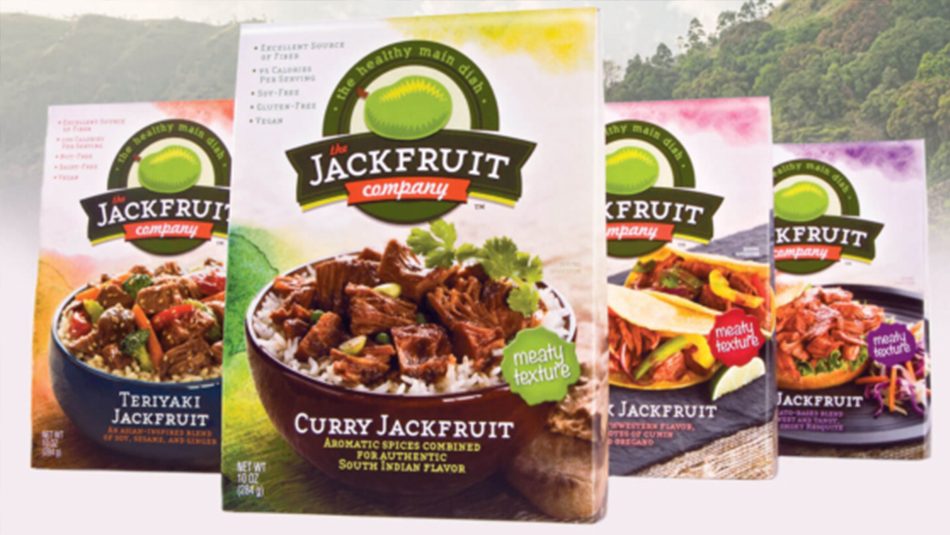
NRA 2017 Foodservice Trend Watch: Consumers Desire Healthful Diet
Equal parts educational, exciting, and overwhelming, the National Restaurant Association (NRA) show once again proved a great opportunity to learn about foodservice trends and to network with like-minded peers and influencers.
More than 2,000 companies displayed their products last month in Chicago during the largest annual gathering of the restaurant, foodservice, and hospitality industry. I noticed a common thread on the show floor for 2017—the acknowledgement of consumers’ desire for more healthful lifestyle and diet—and I collected top trends to watch.
Plant Movement
Meatless meals, plant-based eating, and veg-centric are all buzz phrases you’ll probably hear more and more often. According to a recent consumer survey conducted by the California Walnut Board, 83% of Americans are open to making meatless dishes, particularly if they have a similar taste or texture to meat-centric dishes.

A report by Allied Market Research forecasts that the meat alternatives market will reach $5.2 billion by 2020. The NRA show was flooded with new plant-based and vegan products, hitting home the notion this mainstream trend is here to stay! Here’s a taste:
- Beyond Meat. Plant-based protein burger created to help improve human health, positively impact climate change, conserve natural resources and respect animal welfare.
- The Jackfruit Company. Variety of flavors of shredded jackfruit, which has a texture like pulled pork. Can be used as a sandwich filling or in a rice bowl.
- Field Roast Grain Meat Company. A line of meat-free, grain based sausages, deli slices, and burgers.
- Myrtle Greens. 100% plant-based, vegan jerky made with GMO-free soy.
- Ahimi. World’s first plant-based, sustainable alternative to raw tuna; perfect for use in sushi, poke, tartare, and ceviche.
- Fabanaise. Vegan mayonnaise utilizing aquafaba, a natural byproduct of the chickpea cooking process as an egg replacement.
Breakfast Boom
From convenience options to foods that fit into the specific diets—such as Paleo, gluten-free, and vegan—2017 seems to be a year all about starting the morning off right!
The foodservice industry is focusing on the development of breakfast menus and new breakfast items. According to Datassential, 93% of operators report that breakfast sales have increased compared to last year, totalling $25.5 billion.
I saw many companies promoting the use of cage-free eggs in their products. NRA Conserve Director Jeff Clark led a seminar session about sustainable sourcing, noting that “almost every major restaurant chain and grocery store has pledged to source only cage-free eggs by 2025.”
Healthy portable breakfast foods were around every corner at the show. For example, Susie’s Smart Breakfast Cookieboasts a healthy balance of Omega-3s and Omega-6s packed into a palm-sized treat.
MenuTrends Keynote Restaurant Report recently conducted a survey on breakfast with results showing 80% of consumers say healthy foods are an important part of breakfast and they want better-for-you options for that meal.
Fermentation Nation
Beyond the fresh fare and non-animal laden products at the show, I also found several pickled and fermented foods. It seems Americans are starting to trust their guts and look towards natural probiotics in their everyday diets.
According to Global Industry Insights, functional foods, such as fermented products, are becoming a fast-growing sector, reaching over $130 billion in 2015.
Food purveyors at the show highlighted kimchi, kombucha, miso, kefir, and well… pickled everything. Fermenting doesn’t just lead to longer shelf life in products, it also helps to preserve nutrients in food and to break it down to a more digestible form when consumed. Fermented foods also act as flavor enhancers—a little goes a long way. For eample, chili sauces add depth and complexity that marry incredibly well with classic dishes.
Z Formation
As we all know, kids are our future. And for the future of foodservice, it’s all about Generation Z. Walking the NRA Show floor proved foodservice businesses cater more and more to this post-Millennial demographic.
“With about 80 million members, mostly in their teens, Gen Z will have a huge impact on the global markets and the foodservice industry,” said Abhijeet Jadhav, senior manager of marketing strategy for Georgia-Pacific Professional and moderator of an NRA seminar panel titled Introducing Generation: The World’s Newest Influential Decision Maker.
Born between 1995 and the mid- to late-2000s and making up about 26% of the population (the largest demographic since baby boomers), Gen Zers spend a lot of time online and tend to have shorter attention spans. They are the first digitally-native generation, born into the world with technology. They’ve never been without (and heavily rely on) technology in all aspects of their lives. This means food businesses need to adapt, and make their products and services user-friendly to win over this group.
Gen Z is all about adventurous eating. They want food that offers a good value and quality, but with a unique experience they can share with peers. They demand cleanliness and the highest standards of food safety, with an emphasis on sustainability.
A true multicultural melting pot, this group drives the growth of ethnic cuisine. They are beginning to move beyond types of cuisine and seek out particular dishes. For example, instead of going out for Mexican food, they go out for tacos – which might incorporate Mexican, Korean, or Middle Eastern flavors. This trend is predicted to impact the foodservice industry significantly. We will continue to see the rise of “fusion” spins on traditional dishes.
Technology 2.0
This year’s NRA show featured the StartUp Alley pavilion, showcasing companies who have mastered the digital space in the foodservice world. We saw advancements in electronic booking systems for restaurants, digital customer service, mobile menus, and more.
- SeatNinja: An electronic booking system for restaurants, broadcasting live wait times to customers.
- Bite Inc.: Intelligent kiosks, allowing operators to learn more about their guests and give them a personalized ordering experience.
With Gen Z being a strong driver of today’s foodservice trends, technology will become equally important. 72% of Gen Zers say technology makes them feel more connected.
A foodservice environment that incorporates and encourages socialization and mobile shareability is bound to catch the attention of younger diners. Gen Z gravitates towards dining tools like mobile payment, tabletop tablet ordering, digital kiosks, and custom apps. Foodservice establishments are smart to begin building these services into their operations.
While foodservice trends continue to evolve to meet the needs of existing and new customers, expect to see those outlined above to grow and prevail. NRA “trend watch 2017” over and out… until next year!







